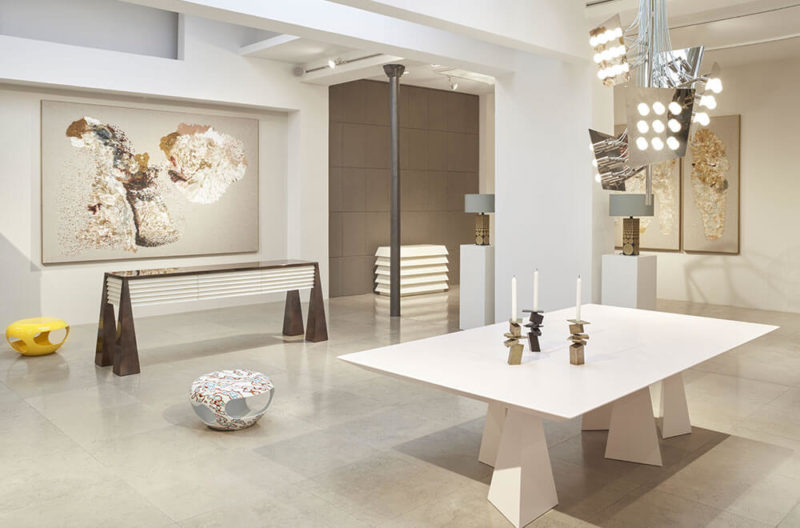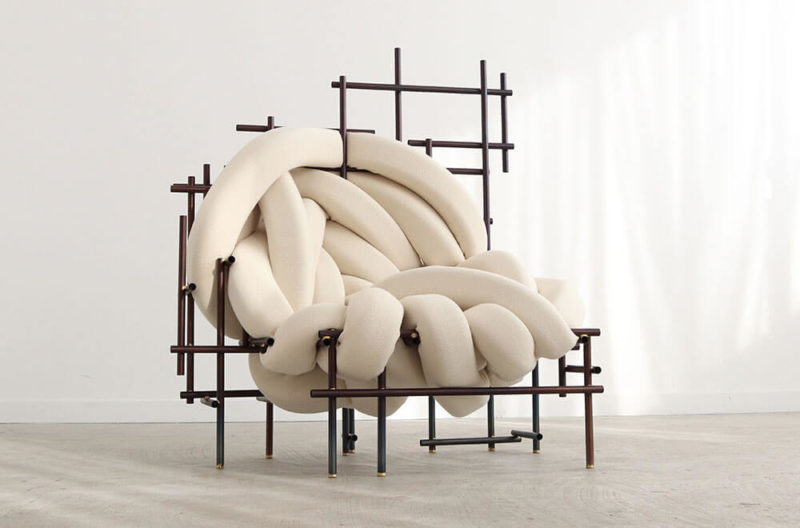Mobilier National
By curating a contemporary furniture collection, it actively supports French designers – bringing their work to a wider audience.
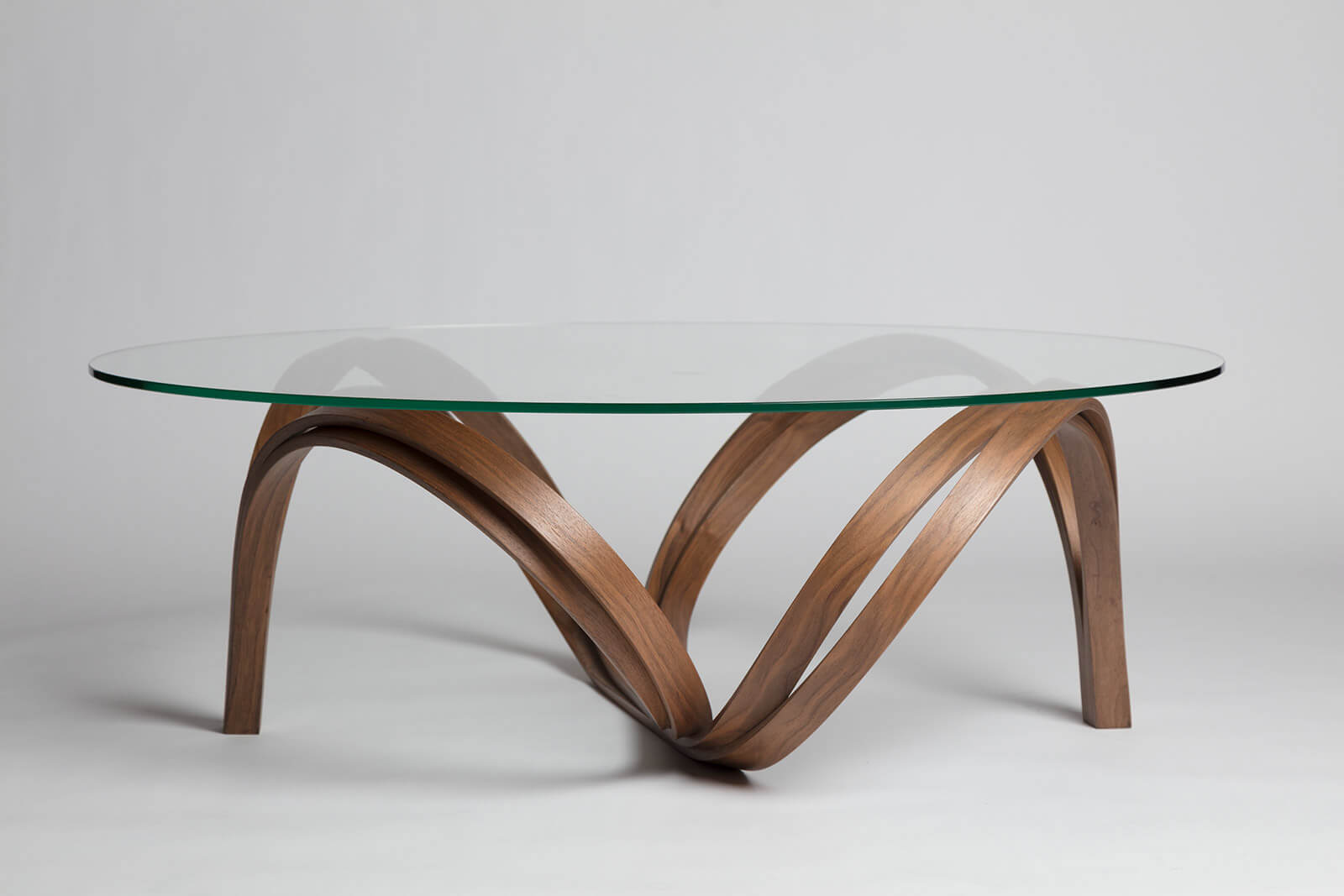
Pierre Renart, ‘Eclosion’ table, 2017-2020
COURTESY: Pierre Renart / PHOTOGRAPH: @François Roelants
FRANCE HAS MAINTAINED a national furniture collection, called the Mobilier National, for over three and a half centuries. From André-Charles Boulle (1642-1732) through to India Mahdavi and the Bouroullec brothers, it represents a panorama of the French design scene. Last spring an “exceptional” call for projects with an overall budget of €200,000 was launched – primarily to support young designers during the pandemic. As a result, several dozen acquisitions have joined the prestigious collection.
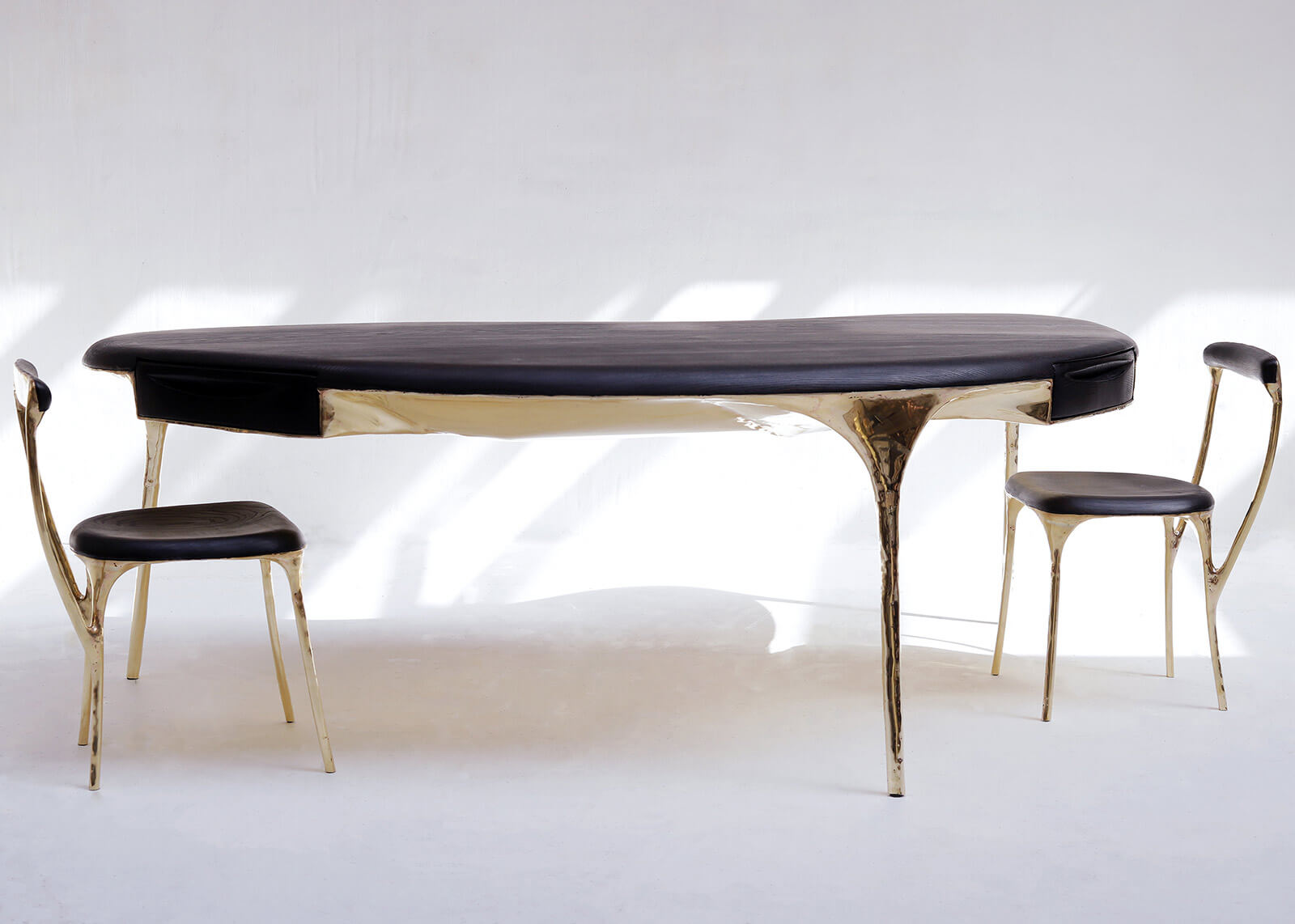
Valentin Loellmann, ‘Brass’ desk, 2020
COURTESY: Valentine Loellmann
On New Year’s Eve, the young designer Pierre Renart had a pleasant surprise. His ‘Eclosion’ table, which had just been acquired by the Mobilier National, appeared on national news during French President Emmanuel Macron’s New Year’s speech. At the end of Macron’s address to the nation, the camera pulled out to show the President in the opulent Elysée Palace, sitting in an armchair in front of Renart’s low table. The gesture reinforced Macron’s announcement last May that he intended to commission projects from young creatives. “I only learned in the morning, from a phone call from the Mobilier National, that my table would be used by the president that evening,” Renart, 30, says. “I was very proud that my creation was representing France on such an occasion.”

Screenshot from President Emmanuel Macron’s new year’s address, 2021, with ‘Eclosion’ table (2017-2020)
COURTESY: Élysée
‘Eclosion’ Table (2017-2020) is formed from two intersecting loops, each comprising two ribbons of walnut, that support a round glass table-top. It is one of two pieces by Renart that the Mobilier National purchased. The second is ‘Möbius Console’ (2013-2019), carved from a single, twisted, continuous strip of wood. “I want to convey the idea that a piece of furniture has a natural elegance,” says Renart, who learnt wood-sculpting at École Boulle in Paris.
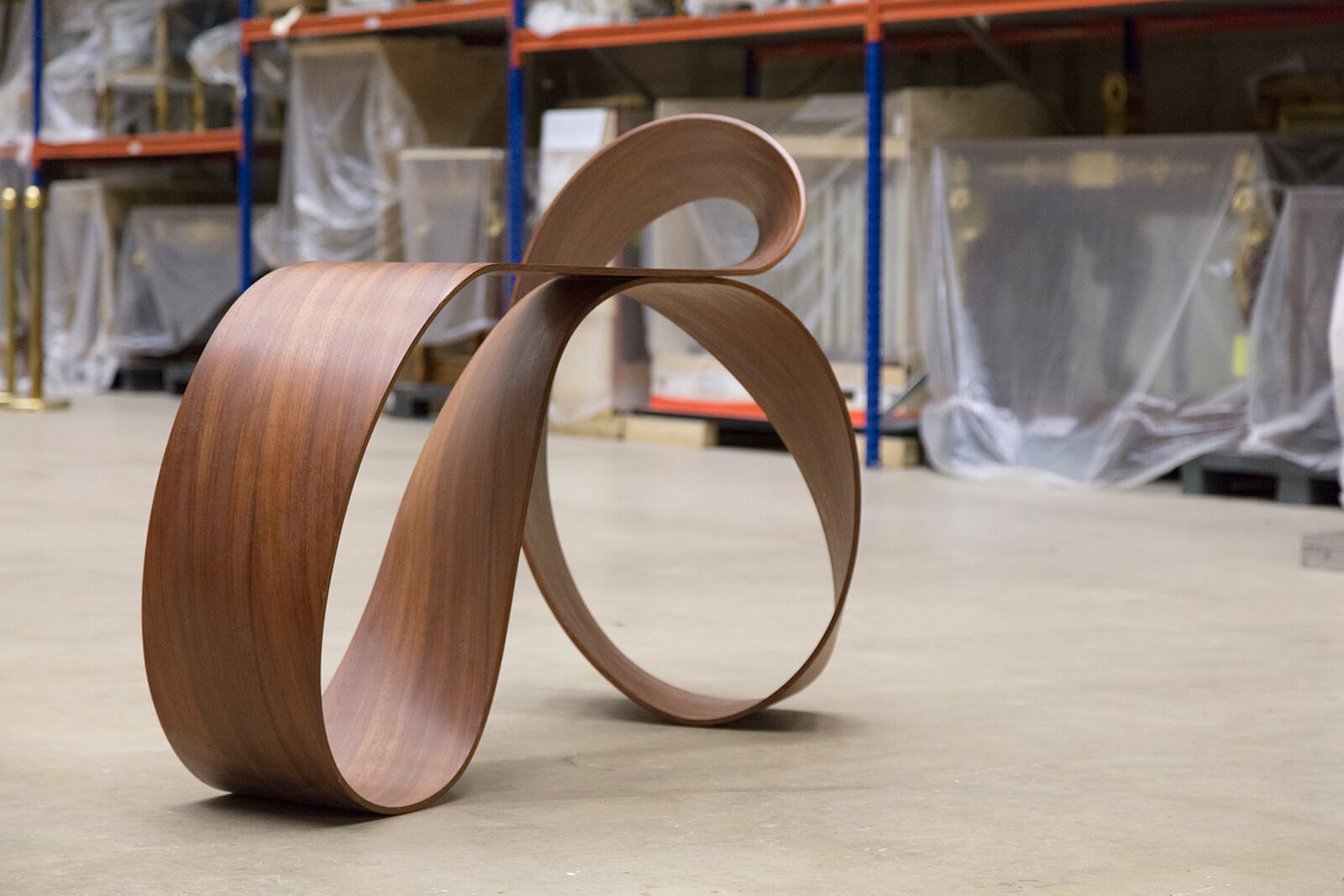
Pierre Renart, ‘Möbius Console’, (2013-2019)
COURTESY: Pierre Renart / PHOTOGRAPH: @François Roelants
Renart put the pieces forward after his gallery, Maison Parisienne, told him about the Mobilier National’s call for projects. The criteria stipulated that the pieces must be produced in an edition of eight, or fewer (the maximum number, according to French law, for something to be considered an original artwork). The acquired works have joined a vast collection of over 100,000 pieces of furniture and textiles that furnish French presidential residences, ministries and embassies.
The history of the Mobilier National began in 1663, when King Louis XIV and his secretary of state, Jean-Baptiste Colbert, ordered the founding of the Garde-Meuble de la Couronne – responsible for the storage and repair of all the furniture and art in the royal palaces. After being renamed Imperial Furniture under Napoleon, it became the Mobilier National in 1870. Since the 1930s, it has been housed in the former gardens of the Manufacture des Gobelins, which manufactures tapestries for the French state – even today. For the last few decades, the Mobilier National belonged to the culture ministry. In the 1960s, the former culture minister André Malraux gave fresh impetus to the institution by creating an atelier for research and creation.
In 1971, President Georges Pompidou chose Pierre Paulin to furnish his private apartments in the Elysée Palace. Paulin was also selected by President François Mitterrand in 1984 to design a blue lacquered metallic desk with pink aluminium stripes. Other presidents have perused the Mobilier National’s collection, or sought advice on which pieces to use for their offices and apartments.

Pierre Paulin, ‘Desk’ designed for President François Mitterrand, 1985
COURTESY: Mobilier National / PHOTOGRAPH: Isabelle Bideau
Hundreds of works by contemporary designers, from established names to upcoming talents, have been commissioned or bought by the Mobilier National. Cédric Breisacher, Julien Lagueste, Pool Studio and Valentin Loellmann are among the young talents whose pieces entered the collection last year. At 28, Breisacher – who makes carved furniture from locally sourced woods – is the youngest. His ‘Dot’ chair (2020), made from oak tinted with a black oxide vegetable dye, visually references industrial design and Art Nouveau techniques.
“My practice is inspired by industrial design in the sense that the forms are without joints, almost as if they’re been made through plastic injection moulding,” says Lille-based Breisacher, whose work features in Galerie Philia’s current exhibition at Walker Tower in New York. “Because the chair is in wood, one wonders how it was made. Thanks to the savoir-faire of craftsmanship, I managed to make a very light, sensual chair with lines and curves that recall the body.”
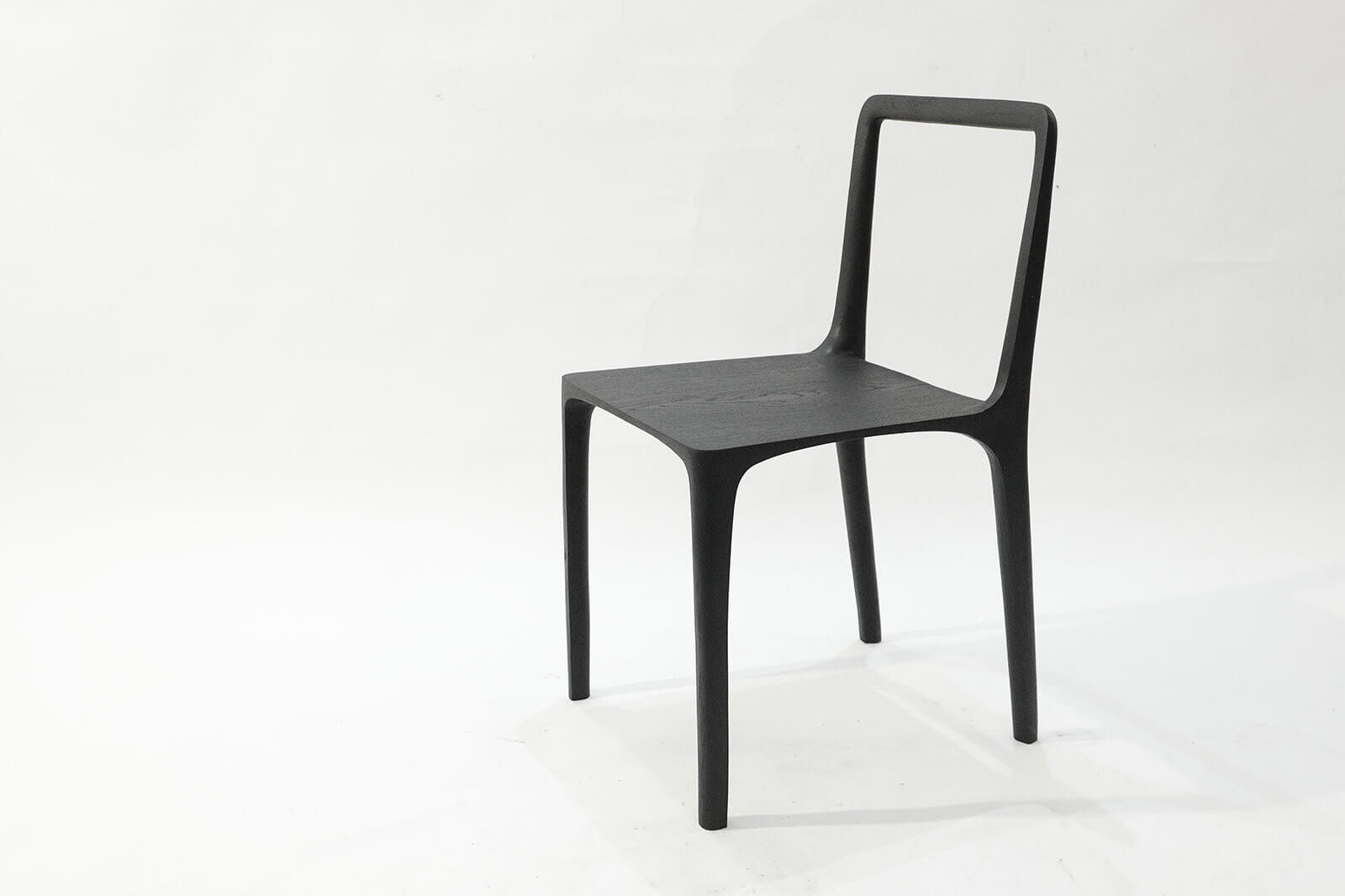
Cédric Breisacher, ‘Dot’ chair, 2020
COURTESY: Cédric Breisacher & Mobilier National
Lagueste’s table, ‘Ile de Beauté’ (2018), meanwhile, was inspired by nature. Lagueste, 32, wanted the plywood layers to evoke the strata of a rock, the pale colour to evoke the sand, and the resin surface to evoke the sea. “I imagine the surface as a painting, and the base as a sculpture, that together create a piece of furniture,” Lagueste says.
Lagueste made the initial drawing as a student at Cread Institute in Lyon in 2016 and spent two years refining the piece to achieve the right harmonious effects. An important aspect is that its interior is hollow. “Something doesn’t have to be heavy in order to be solid and it’s more interesting financially and ecologically as no wood is wasted,” Lagueste says.
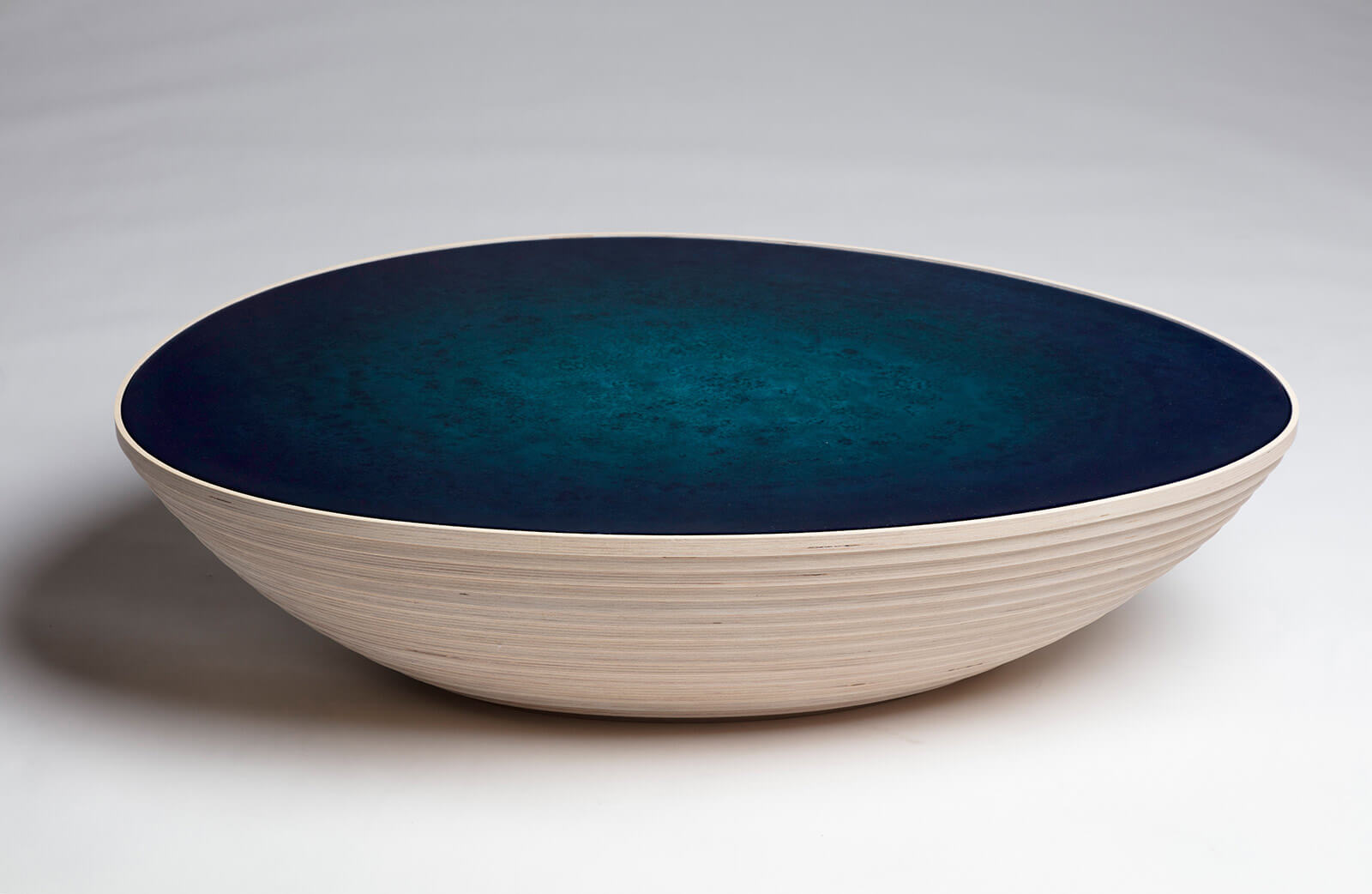
Julien Lagueste, ‘Ile de beauté’, 2018
COURTESY: Julien Lagueste / PHOTOGRAPH: @François Roelants
Pool – a Paris-based studio founded by Léa Padovani and Sébastien Kieffer – collaborated with Atelier François Pouenat to make the aluminium ‘Barrel’ desk (2019). Pouenat, the fifth generation of a family of metalworkers, invited Pool and other international designers to develop metal pieces in his studio. “We produced limited-edition pieces inspired by the craft of metalworking, in a real conversation between a designer and a craftsman,” Padovani says.
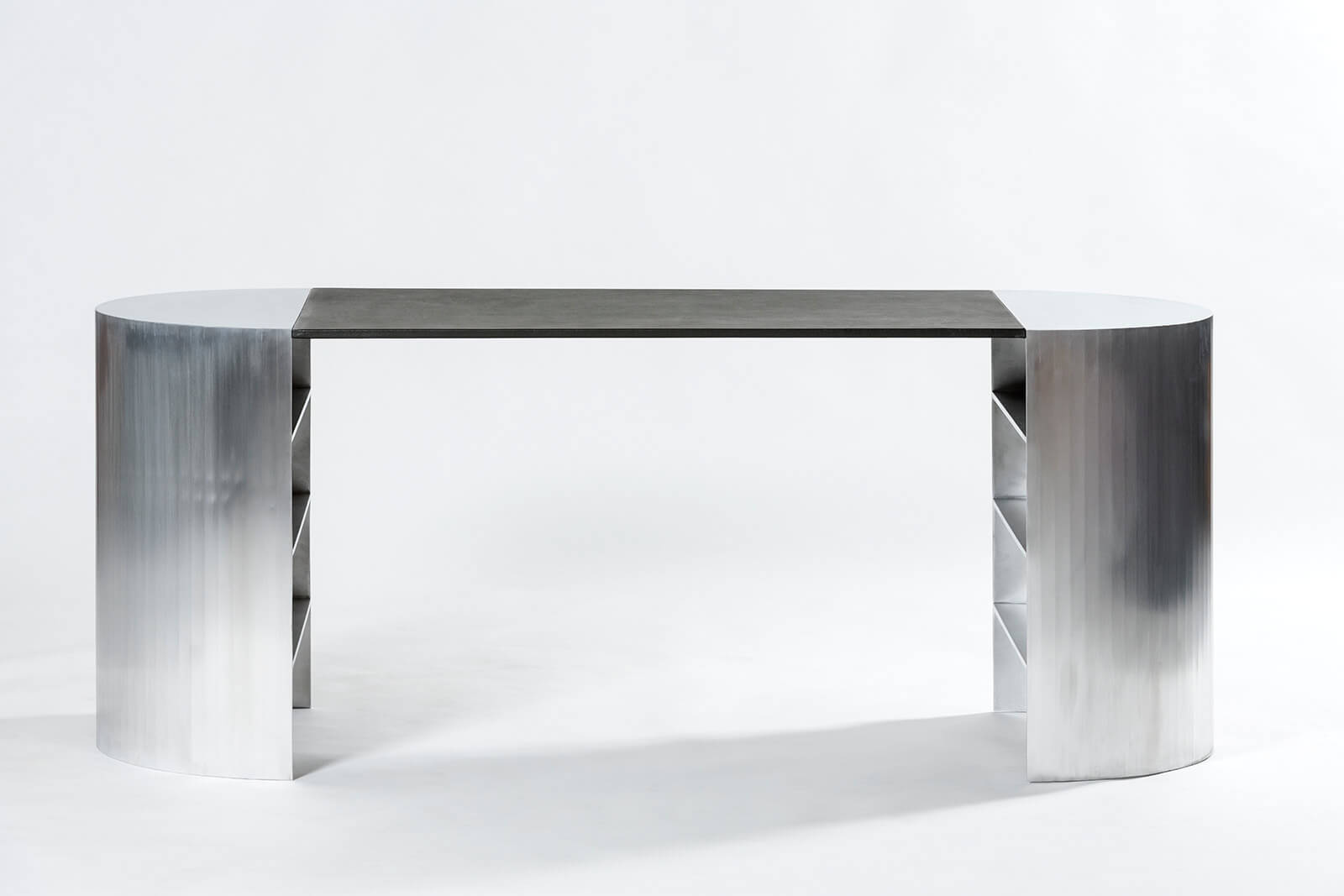
Pool Studio, ‘Barrel’ desk, 2019
COURTESY: Pool Studio
‘Barrel’ desk represents a geometric interplay between a rectangular work table and two semi-circle sides that are characterised by hammered, textured lines. “We wanted something smooth but hammered,” adds Padovani, 39, who met Kieffer, 38, when they were both working for designer Noé Duchaufour-Lawrance. Since launching their own agency, the duo has built an impressive portfolio spanning furniture, products and interior design.
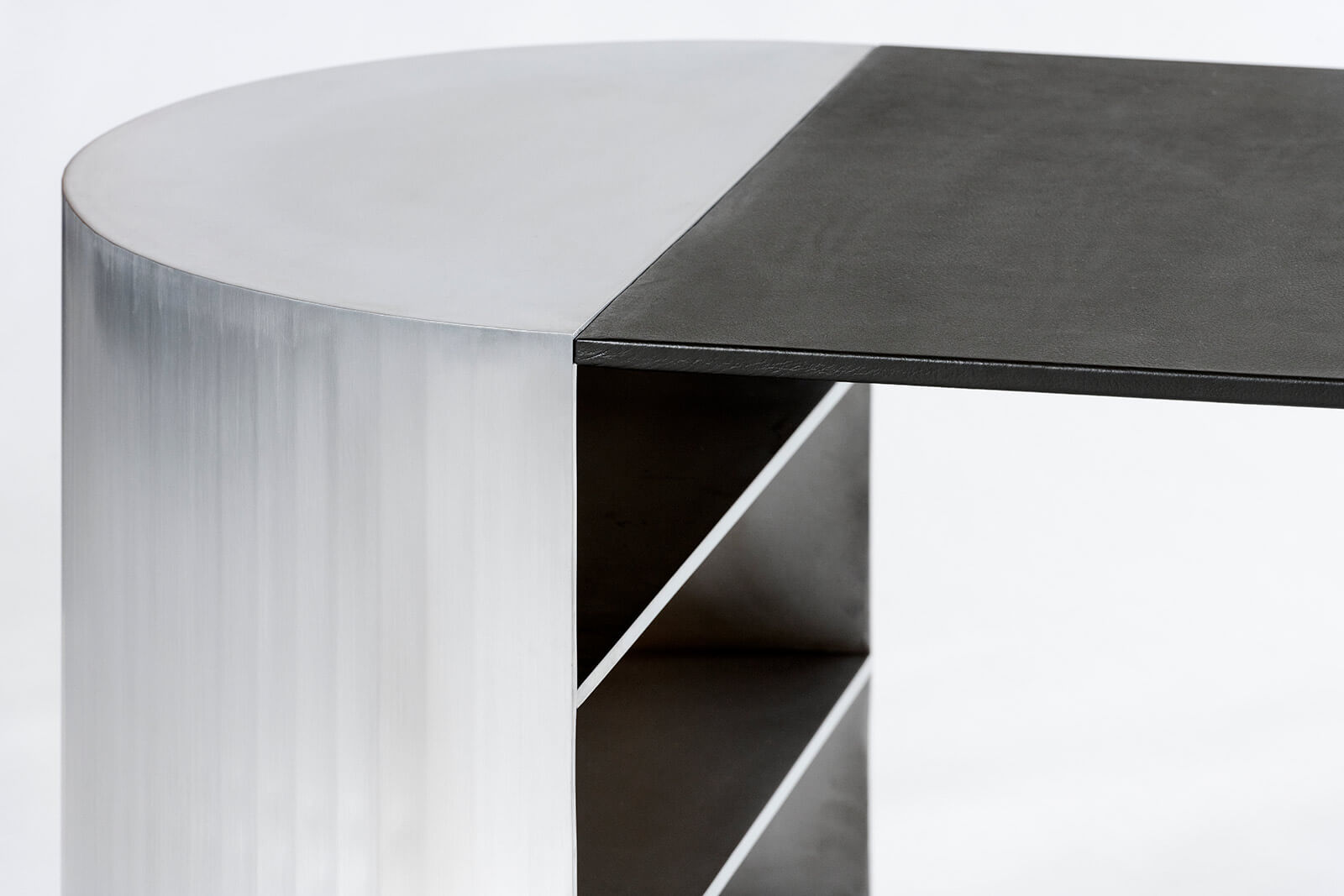
Pool Studio, ‘Barrel’ desk, 2019 (detail)
COURTESY: Pool Studio
The Mobilier National purchased pieces by two designers represented by Galerie Gosserez in Paris: ‘Brass’ desk (2020) by Valentin Loellmann and a pair of ‘Nida’ lamps (2019-2020) by Vincent Poujardieu.
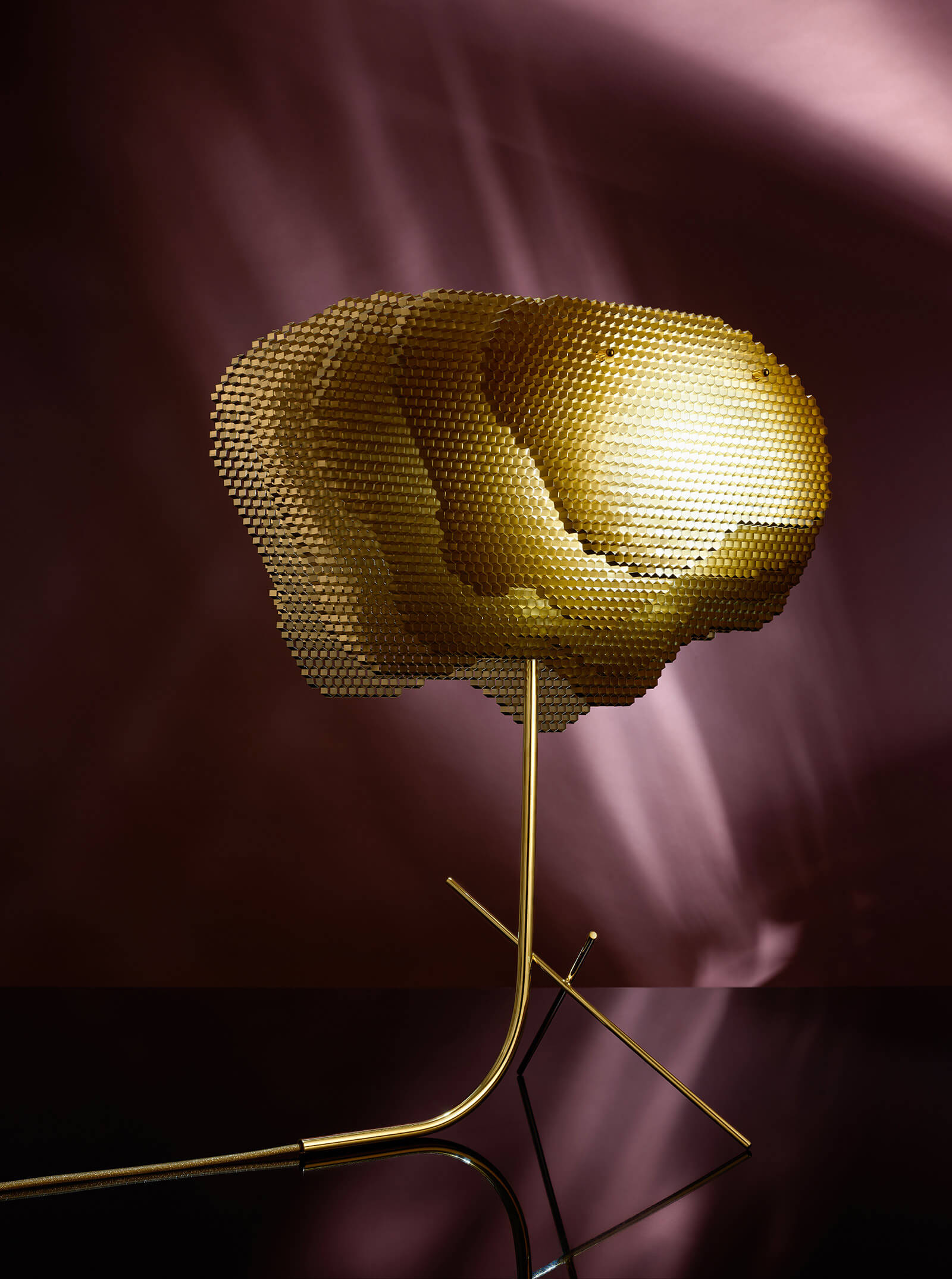
Vincent Poujardieu, ‘Nida’ lamp, 2019-2020
COURTESY: Vincent Poujardieu / PHOTOGRAPH: Mathias Sgandura
“Poujardieu drew inspiration from the ‘sandwich panels’ of man-made honeycomb structures to make his ‘Nida’ lamps …”
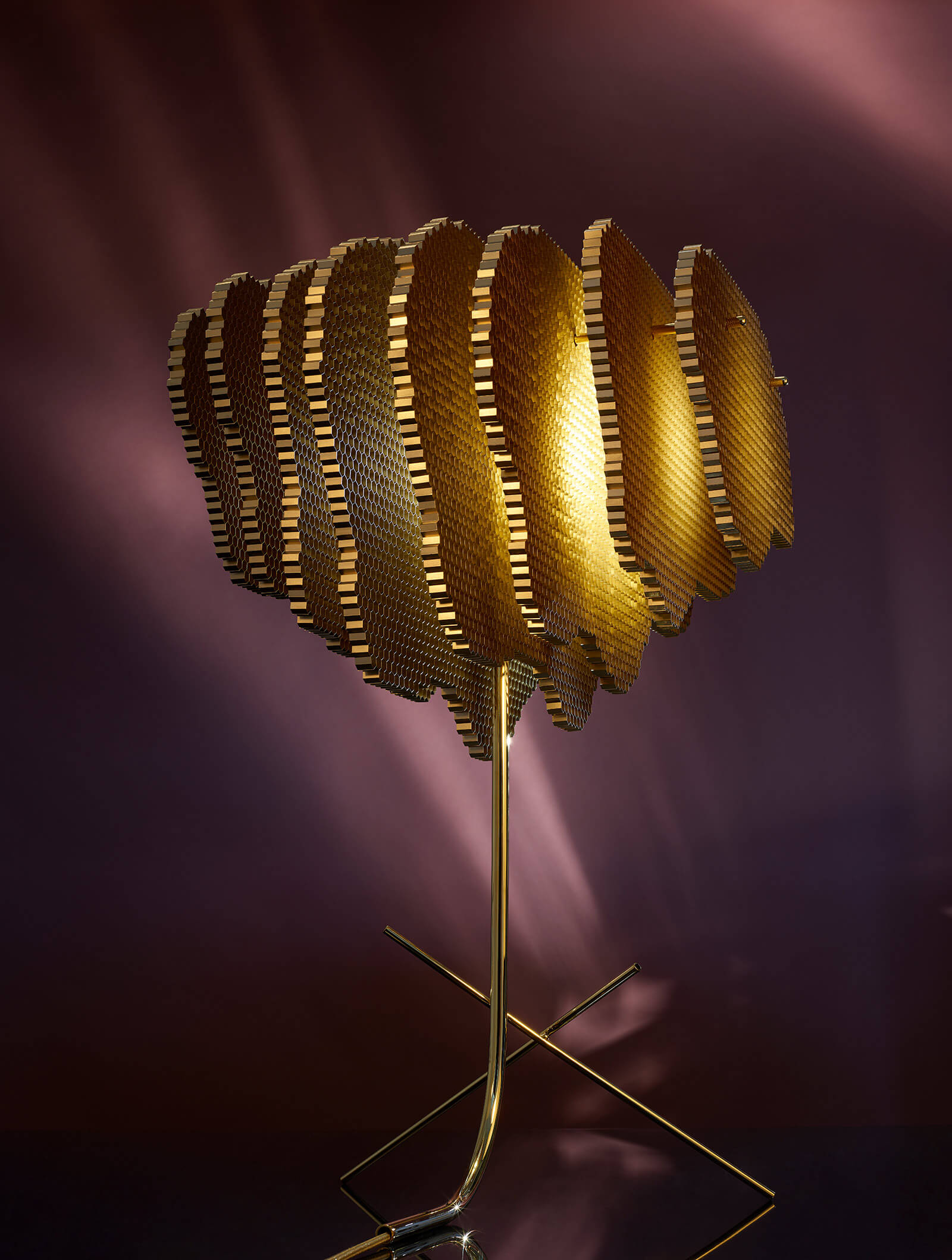
Vincent Poujardieu, ‘Nida’ lamp, 2019-2020
COURTESY: Vincent Poujardieu / PHOTOGRAPH: Mathias Sgandura
“… He then researched how light would pass through the hexagonal patterns of the aluminium sheets, which have a 24-carat gold finish”
Loellmann is a German designer based in Maastricht. His ‘Brass’ desk, with three brass legs and curvilinear wooden top, was envisioned to break with the standard four-legged archetype. “I try to break all the rules in furniture-making of what’s possible and what’s allowed,” Loellmann, 37, says. “This organic shape changes your habit of how to approach a piece as it’s more playful and less restrictive.”
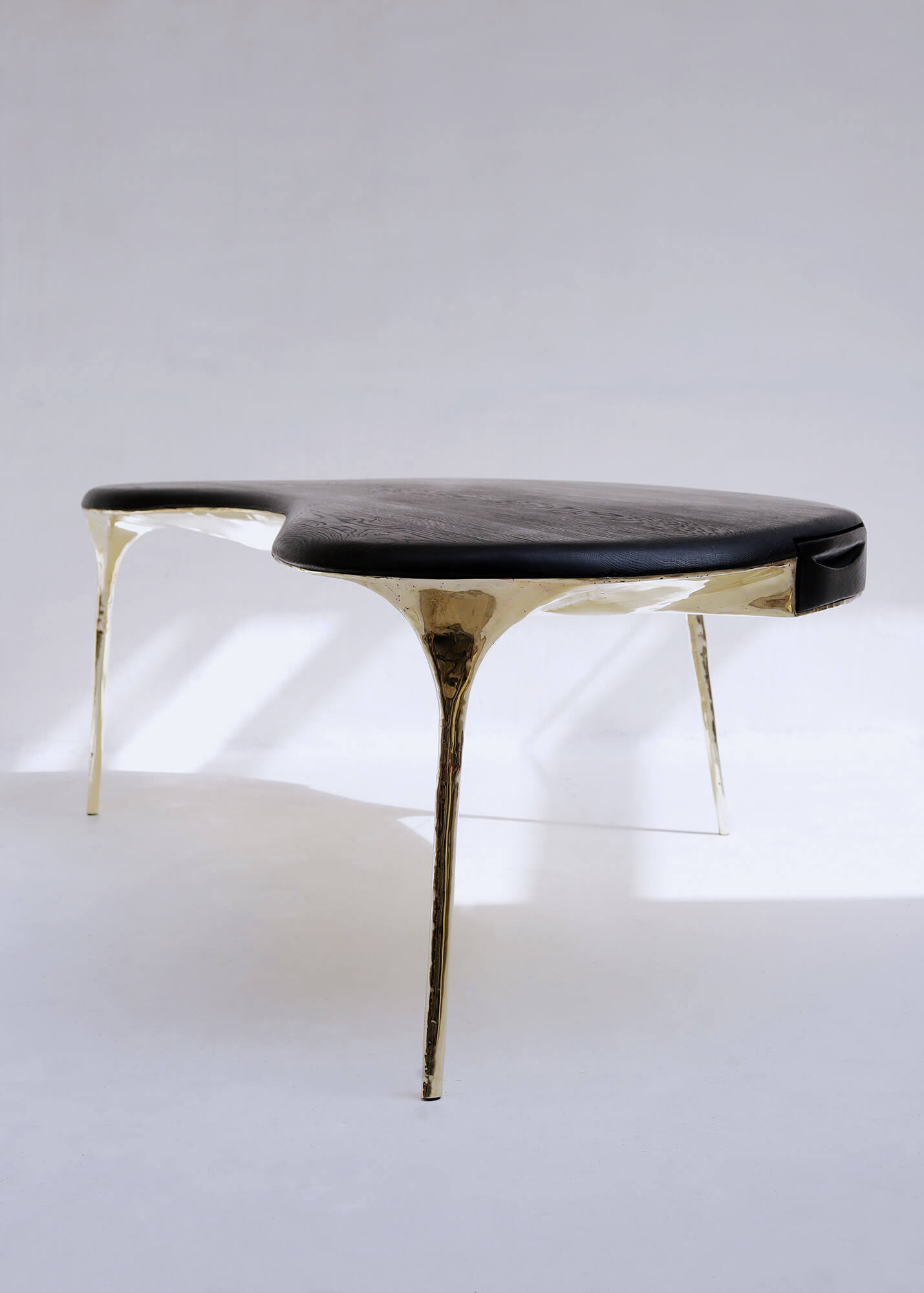
Valentin Loellmann, ‘Brass’ desk, 2020
COURTESY: Valentine Loellmann
Indeed, Loellmann’s aesthetic philosophy is based on changing perceptions and behaviour, a tendency dating back to his childhood desire to divert and reshape the water flow of a stream by creating a small dam. In the same way, people sitting around the ‘Brass’ desk can choose where to sit, thanks to its fluid form. “I try to make pieces that don’t scream but that [might induce] somebody to think differently,” he explains.
Bordeaux-based Poujardieu drew inspiration from the ‘sandwich panels’ of man-made honeycomb structures to make his ‘Nida’ lamps. Then he researched how the light would pass through the hexagonal patterns of the aluminium sheets, which have a 24-carat gold finish. “Over three years I developed a concept about the effects of light passing through this structure in order to achieve interesting, optical, kinetic effects,” Poujardieu, 57, says.
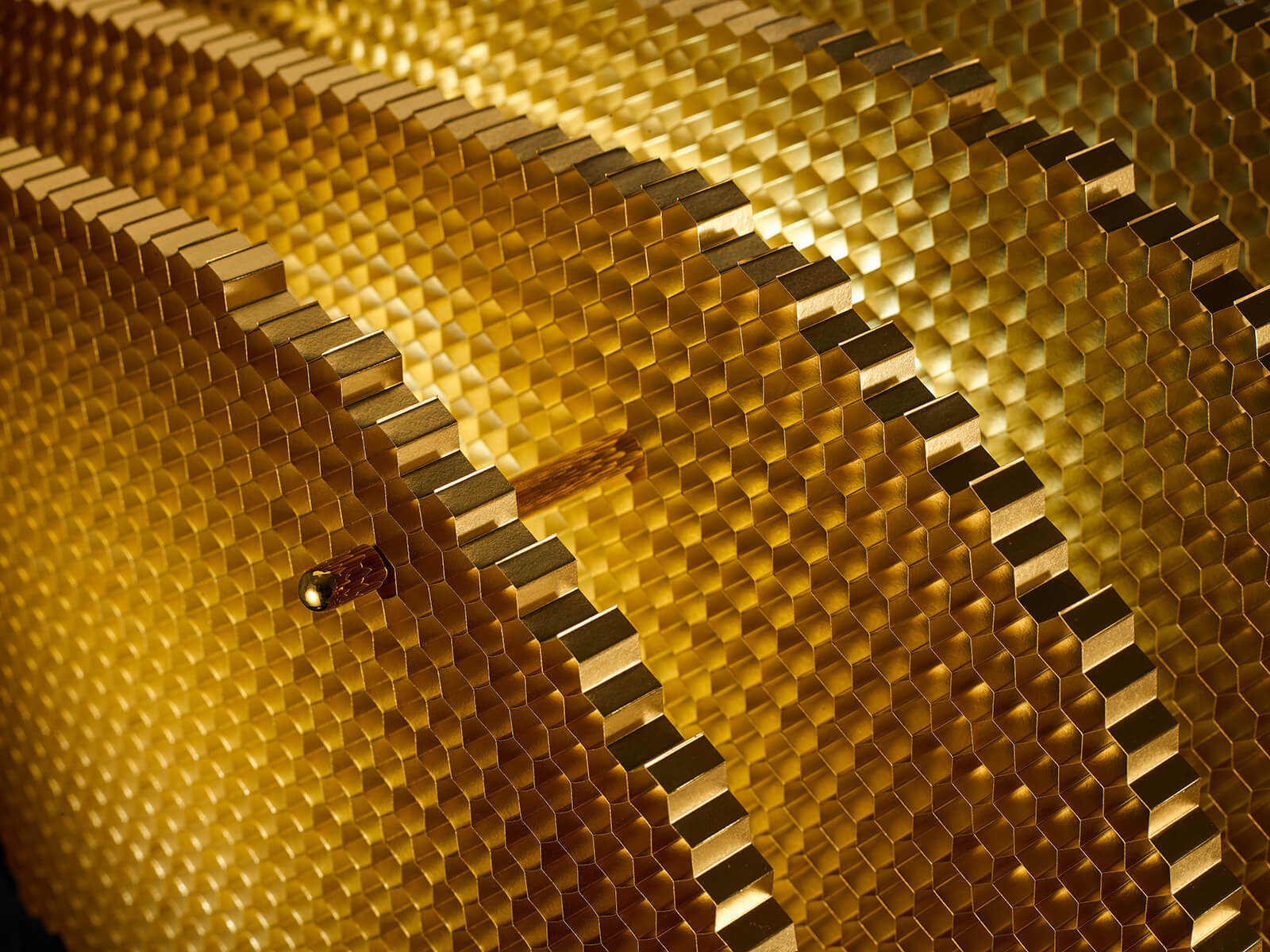
Vincent Poujardieu, ‘Nida’ lamp, 2019-2020 (detail)
COURTESY: Vincent Poujardieu / PHOTOGRAPH: Mathias Sgandura
Fascinated by certain types of technology, Poujardieu works with materials that are manufactured for the aerospace industry. The son of a watchmaker father, he has a meticulous attention to detail that, combined with his contemporary art background, finds expression in technically advanced pieces. His lamps were very successful last year – the badge of honour bestowed by the Mobilier National certainly enhanced their popularity.





